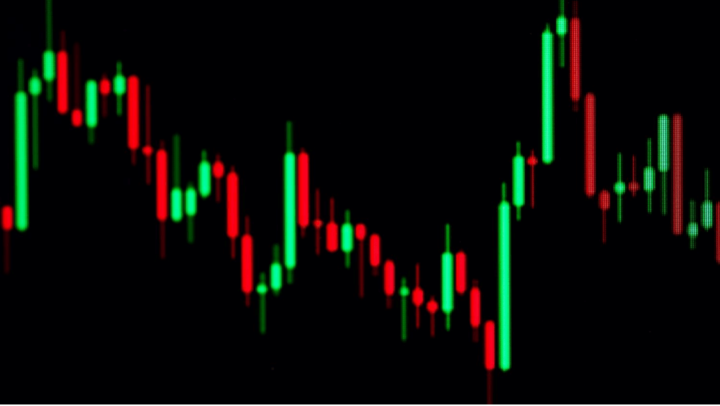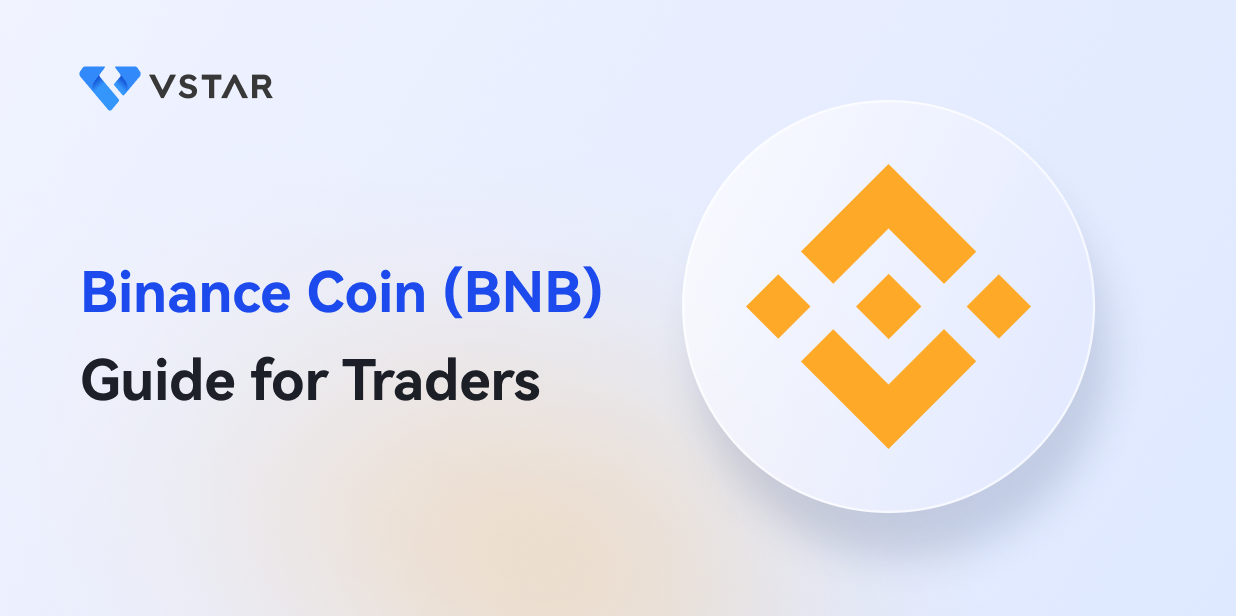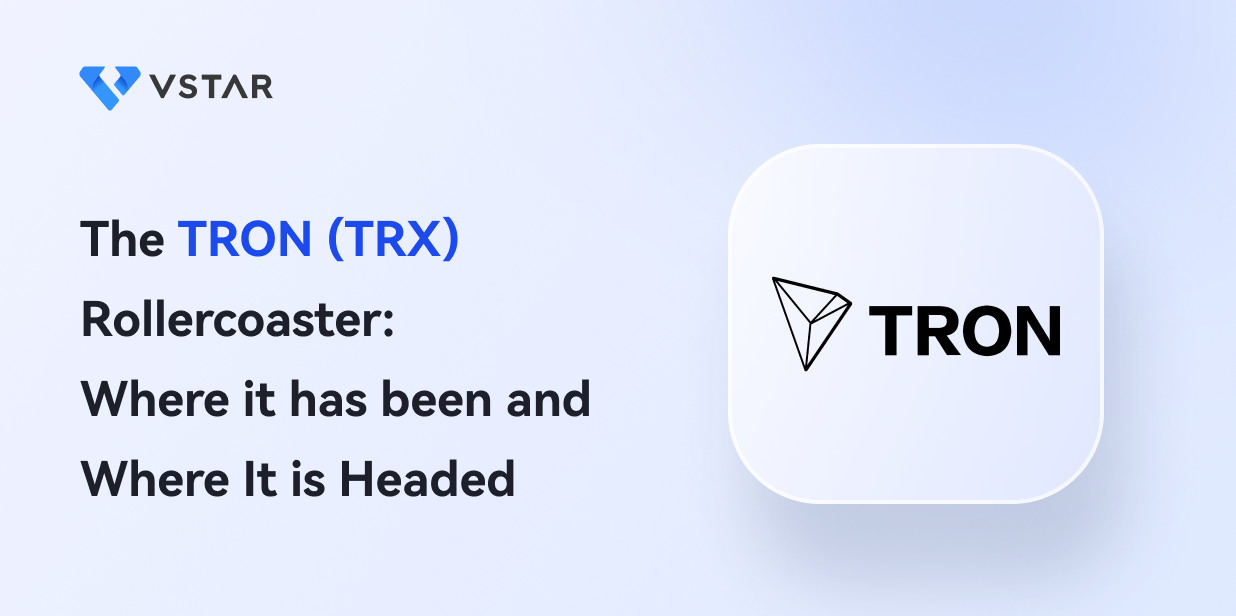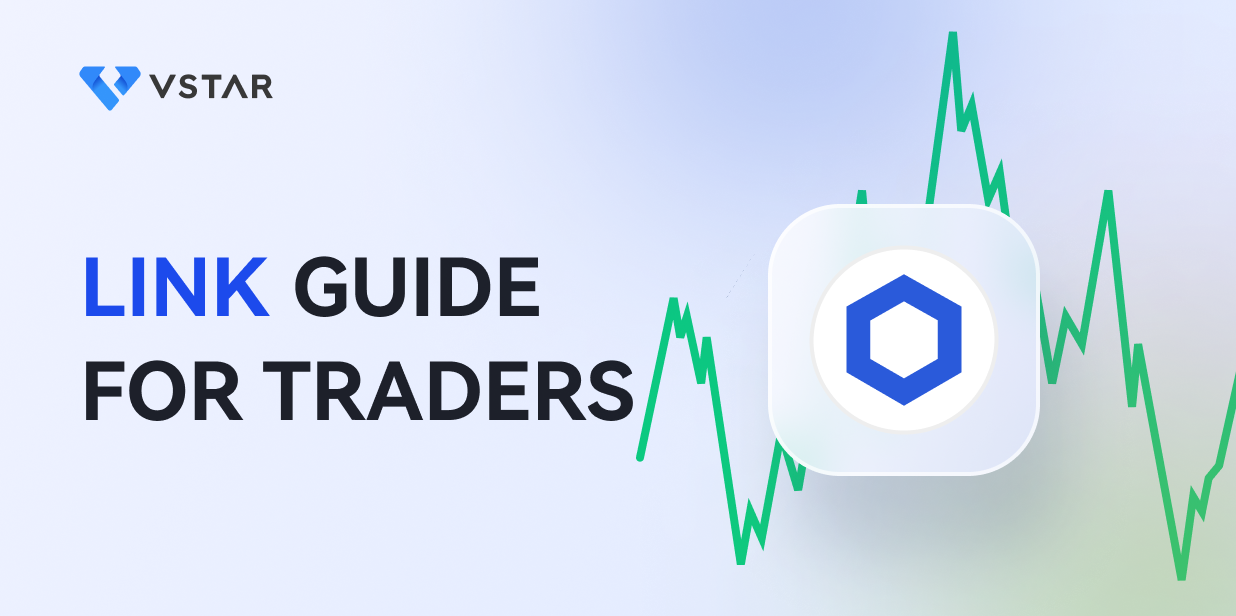Understanding BNB and How It Works
What is Binance Coin (BNB)?
Binance Coin is the native cryptocurrency of Binance, one of the world’s largest crypto exchanges. It traded with the symbol BNB. BNB was initially based on the Ethereum network. However, it’s now the cryptocurrency that powers the BNB Chain ecosystem. At the time of writing, BNB was ranked as the 4th cryptocurrency ranking behind USDT, ETH, and BTC, and had a market cap of approximately $49 billion.
Like most cryptocurrencies, BNB’s value in the market is subject to fluctuation as it’s used and traded. This coin can be purchased on platforms like Binance Exchange, Crypto.com, OKX, Coinbase, etc.
A brief history of BNB
BNB was founded by Changpeng Zhao, a developer popularly known as CZ. BNB was launched during an initial coin offering (ICO) in July 2017 based on the Ethereum blockchain and worked as an ER-20 token before it became Binance Chain’s native cryptocurrency in April 2019. Half of the 200 million tokens allocation went up for public sale, while the rest was set aside for the founding team and angel investors. Each token was priced at 15 cents. Through the ICO process, Binance was able to raise $15 million in ETH and BTC.

BNB burning
Currently, the number of BNB coins in supply is lower than what was offered in the 2017 ICO. Why is this the case anyway? Binance repurchases a portion of BNB coins and permanently destroys or burns them every quarter. The burn is based on the trading volume and aims to support BNB price in the market by reducing supply.
As of January 2023, 21% of the 100 million tokens had been burned. BNB Chain completed its 23rd BNB burn on April 2023 of about 2.02 million tokens worth $676,744,304
Recently, Binance introduced the BNB Auto-Burn, which is a mechanism that provides an independently auditable, objective process.

Uses of BNB
Initially, BNB was launched and created as a utility token for discounted trading. However, its application on different platforms has expanded over the years. BNB uses include:
1. Transaction fees – BNB is used to pay for transactions on Binance Exchange, and users receive a discount.
2. Payment processing –merchants can offer BNB as means of payment for their customers.
3. Trading – BNB can be exchanged and traded against other cryptocurrencies or fiat currencies on exchanges or brokerage accounts.
4. Investing in ICO – you can use BNB to invest in some ICOs listed on Binance’s Launchpad program.
5. Credit card payments – BNB can act as a form of payment for crypto credit card bills.
6. Booking travel – BNB can be used to book hotels and flights on selected websites like TravelbyBit, Alternative Airlines, Travala, etc.
Fundamental Analysis of BNB
Fundamental analysis entails measuring BNB’s intrinsic value by evaluating related economic and financial factors. Doing so lets you understand BNB’s prospects and potential growth or determine whether it’s an overvalued or undervalued cryptocurrency.

Here are 5 factors that matter when doing fundamental analysis for BNB:
1. BNB demand
The law of supply and demand dictates that if demand exceeds supply, prices will rise. Over the years, the number of people using BNB has grown gradually. It can also be linked to the growing number of users on the Binance platform. Also, BNB trading volume has grown exponentially. For instance, as of the time of writing, Binance’s number of users was about 90 million, and in 2020 it was approximately 21.5 million. Therefore, BNB’s value tends to increase and ultimately increase its demand.
2. BNB burns
Binance aims to burn some BNB coins quarterly to reduce the supply. This approach is more likely to create scarcity of BNB coins in the market, consequently increasing the value. Therefore, BNB’s price is expected to rise from a long-term perspective.
3. Increased utility and adoption
BNB is one of the cryptocurrencies offering diverse use applications, from staking BNB and paying with BNB to trading BNB. Binance Pay also enables its 22 million users to use BNB to pay over 9,000 registered merchants.
Binance’s new partnerships and developments also play a significant role in increasing BNB adoption. In the long run, increased utility and adoption boost BNB’s value in the market.
4. Plans to make BNB a stablecoin
Plans to make BNB a stablecoin could easily attract mainstream interest. Eventually, if it succeeds, you could see a positive effect on BNB’s price.

5. The regulatory framework, competition, and security risks
There are certain aspects an investor must not ignore when looking at BNB. First, suppose future regulations will be harsh on the crypto market; it would hurt the price of BNB. The security risk of investors' funds is another factor that could undermine the massive growth of BNB in the future. Lastly, BNB and BNB chains ought to be extremely valuable in the market to compete with SOL, ETH, and ADA.
Technical Analysis of BNB
Technical analysis is one of the critical aspects every trader must understand if they want to achieve consistent results. It entails understanding the ins and outs of a crypto chart and evaluating statistical trends to predict the market's direction. Consequently, it helps you make more informed decisions about when to buy or sell a crypto asset like BNB.
Below are basic tools and indicators you can use to conduct technical analysis when trading BNB;
1. Support and resistance levels
Look for strong support/resistance levels, especially key prices around previous all-time highs and lows. These are the levels that the market finds difficult to exceed. As a result, once the market hits such points, it tends to bounce back (upwards or downwards) depending on the trend.
2. Chart patterns
Often, history tends to repeat itself in the market: some chart pattern that occurred a long time ago tends to happen repeatedly. Therefore, look for chart patterns like triangles, double tops, head and shoulders, wedges, rounding bottoms, etc. Identifying such patterns could help you find great entries and stop levels depending on the trend in the market.
Note: it is also vital you understand, or you’re able to interpret candlestick patterns. Each candlestick represents an activity around a particular time frame. It’s a way to visualize price information in the market.

3. Trend lines
One of the basic principles is technical analysis is that price moves in a trend regardless of the time frame you use. So, what is a trend line? It’s a single line that connects different high and low price points. The more price points connect to a line, the stronger the trend. Mostly, trend lines will help you determine the current direction of BNB in the market.
4. Moving Average (MA)
The moving average is an indicator that helps track the price trends of an asset over a defined period and gives you insights into the market's direction.
For instance, the 200 and 50-day moving averages may often help you identify dynamic support and resistance levels.
5. RSI and MACD indicators
Tracking Relative Strength Index (RSI) and Moving Average Convergence Divergence (MACD) indicators helps you see whether BNB is overbought or oversold. Often, an indication of overbought states is a potential sell signal, and an oversold condition shows a possible buy signal.
6. Trading volumes
Trading volume measures the relative significance of a market move, which helps make decisions. Higher trade volumes show high liquidity in the market and better order execution. Besides, the higher the volume, the more significant the move, and vice versa.
Understanding BNB trading volumes will help you identify the market's best entry and exit points.

Trading BNB Using CFDs
Contract for Difference (CFD) trading is a form of trading or a financial instrument that allows market participants to make money on the difference between a position's opening and closing price. In CFD trading, you don’t have to open a position directly in the crypto market; instead, you engage in a contract with a broker (brokerage firm). Over the past fear years, trading cryptocurrencies via CFDs has gained much attention. Most CFD brokers like VSTAR now offer trading on major cryptocurrencies, including BNB.
It’s one of the altcoins dominating the crypto CFD markets with great profitable opportunities.
Why trade BNB CFDs?
A. You don’t have to own the actual token
One of the most significant benefits of CFD trading is that you don’t have to own the underlying asset. Therefore, you don’t have to go through some hassles like storing the cryptocurrency in a wallet.
B. Cheaper and more flexible than exchange trading
Suppose you decide to trade the BNB coin on a crypto exchange, you’re prone to expensive fees, and the transaction isn’t instant. On the other hand, CFD brokers like VSTAR allow instant trade execution in the market at zero fees. Therefore, with CFD trading, you can easily take advantage of price fluctuations in the market to make profits.
C. Go short or long
Unlike other forms of crypto trading, like spot trading, you’re limited to buys; CFD trading allows you to sell or buy BNB CFDs, depending on your market analysis. Therefore, you can profit on either a bull or bear market. Besides, no expiry dates on positions.

D. Leverage your capital
CFD brokers allow access to leverage, which helps you take bigger positions in the market to magnify your profits and losses. Therefore, you could make good profits if your trading strategy has a high win rate.
E. Broader hedging options
With CFD trading, you can have a hedging strategy that helps you open additional positions to hedge against losing positions.
BNB CFD trading for beginners: Tips to get started the right way
1. Look for a reliable broker
How do you identify a reliable CFD broker? A good broker offers tight spreads, risk management tools, low trading fees, and flexible leverage. More importantly, the broker should be regulated to help guarantee your funds as investors are protected.
2. Utilize demo accounts
Often, most CFD brokers allow their users to access a demo account. Before you start trading on a live account with your own money, it’s good you start trading on a demo account. Why is it essential for new traders? It allows you to understand how the market works. It also allows you to develop and test the effectiveness of various BNB trading strategies.
3. Be cautious of high leverage
Leverage magnifies your profits and also your losses. With assets like BNB that can be volatile at times, you should be cautious of using extremely high leverage to avoid substantial losses in a short period. Using leverage also requires managing risk (we’ve outlined risk management tips down there).

4. Devise a trading strategy that helps you minimize loss
In CFD trading, having a reasonable trading strategy is important. A good strategy should give you an excellent risk-to-reward ratio. In other words, a good strategy should help you make more when you’re right and lose less when you’re wrong.
BNB Trading Strategies You Need to Know
Here are 6 strategies (short and long-term trading) you may consider using while trading BNB CFDs:
1. Trend following (Trend trading)
This is a strategy where you ride the trend; therefore, you take buy opportunities when the price is bullish and open a sell position when the price is bearish. This strategy often favors intraday day traders. However, also applicable in shorter time frames but ought to tight stops to manage risk. Additionally, it requires a stable market environment to take positions.
2. Range trading
Range trading requires you to look for a period where the BNB price is in a range bound (moving back and forth) between support and resistance zones. You buy at the support level (low) and sell at the resistance level (high) or vice versa. To maximize profits, you may opt to take many trades of the sideways price movement. However, this strategy requires you to be careful, as a breakout often follows it.
3. Breakout trading
Breakout trading is one of the most profitable BNB trading strategies for short- and long-term traders. You enter long or short positions when BNB’s price breaks a ranging zone or pattern, like continuation and reversal breakouts. You must look for opportunities to get into a trend as early as possible to maximize on.

However, you must watch out for false breakouts, which tend to occur at the support and resistance zones which can easily take you out. To avoid such instances, wait for a candle to close outside the range before opening a position.
4. Reversal trading
A reversal is when the BNB price direction (trend) changes to the opposite side. Often, reversal trading presents you with a higher risk-to-reward ratio, especially when you spot reversal early enough. You can utilize patterns like the double top (bearish reversal signal) or double bottoms (bullish reversal signal). Also, look for long tails, wicks, and engulfing patterns. You use tools like Fibonacci to identify price retracements that symbolize reversals.
Since this is a high-risk approach, consider having tight stops.
5. News trading
Current events like geopolitical events and news reporting like economic releases tend to influence the price movement of BNB and other assets in the crypto market. News trading entails anticipating the market reaction to news releases and taking those opportunities to open trades. Depending on your fundamental analysis, take long or short CFD positions as soon the news is released and is ready to take your profits as soon as the trade reaches peak momentum.
Usually, news releases are followed by market volatility, sometimes extreme volatility; therefore, be sure to have stops and manage your risk accordingly.
6. Scalping
Scalping is a form of short-term trading utilized by high-frequency traders. This kind of trading strategy presents you with short-term trading opportunities from small BNB price fluctuations, making fast profits.
It requires you to monitor your charts and trades constantly. Above all, you must have a solid risk management strategy in place.

Managing Risk in CFD Trading
Here are five trading tips to help you manage risk in the CFD market:
A. Don’t risk more than 5% of your capital
You should risk only 1 to 5% on a single BNB trade. That means even if your trades go into a loss, you still have 95% of your capital to take other better trading opportunities another time.
You could risk more, but it could lead to increased loss if your analysis is wrong, considering the leverage magnifies your loss. Generally, avoid taking unnecessary risks.
B. Utilize stop-loss orders
It’s essential you place stop-loss orders to limit losses if they occur. Besides, it gives better control of your account than when trading without one.
Consider trailing them when you’ve wider stops, especially for short-term trades. It doesn’t only protect your capital in case the market reverses, but it also helps you protect a little portion of your gains if your trade is already in profit.
C. Avoid excessive leverage
You may probably be asking how having high leverage is terrible in trading. It can result in higher drawdowns. In some cases, especially when you don’t manage risk, high leverage could cause you to lose an entire trading balance in your account.
D. Stay updated with Binance news and announcements
Often Binance news and announcements like an upcoming partnership, the launch of new developments, or upgrades tends to affect BNB price. Therefore, staying updated could help you identify excellent trading opportunities.
E. Diversify into other cryptocurrencies
Consider diversifying into other cryptocurrencies and not just BNB. Diversification allows you to minimize/mitigate potential loss risks if your BNB analysis isn’t correct.
Bottom line
In recent years, BNB has been one of the best-performing cryptocurrencies in the market. Consequently, it has presented many investment opportunities for both short-term traders and long-term investors. Additionally, its trade volume and utility have increased steadily over the years since 2017.
With the quarterly scheduled coin burns, you can expect the BNB coin's price to rise in the future. It also means you can take advantage of such price changes in the BNB CFD market to make profits. However, ensure you trade with a reliable brokerage firm like VSTAR, which offers you low spreads and trading fees and is regulated.




